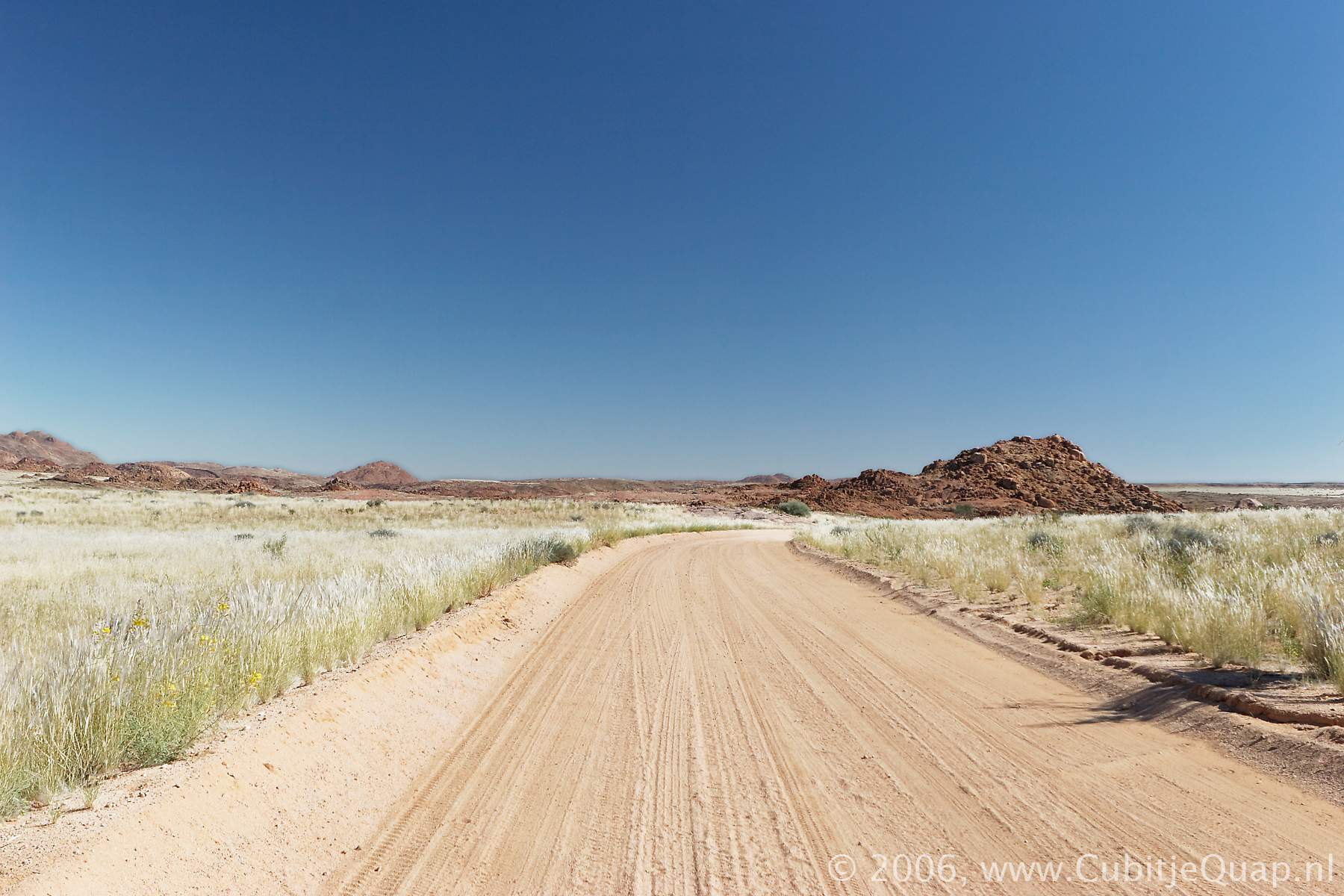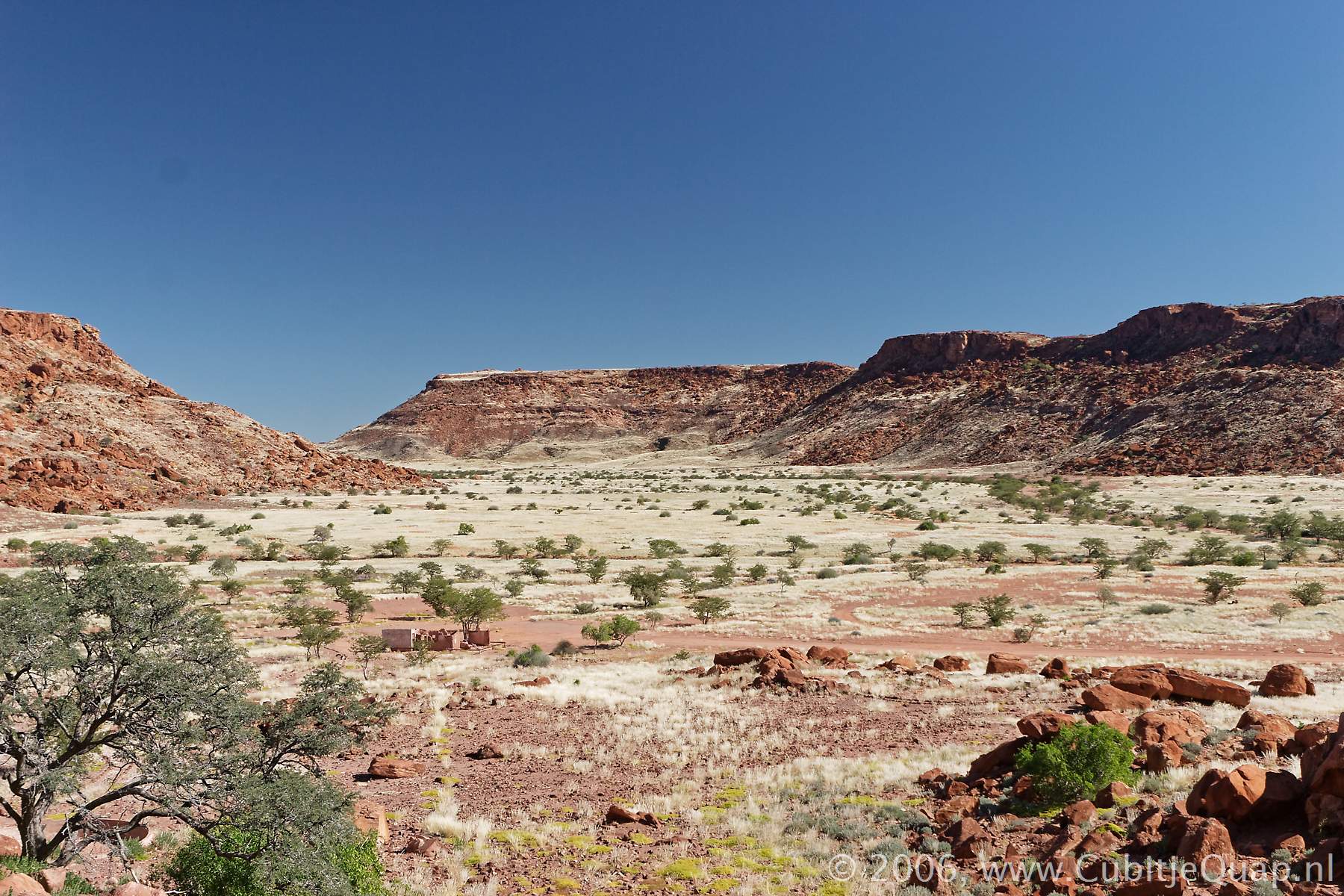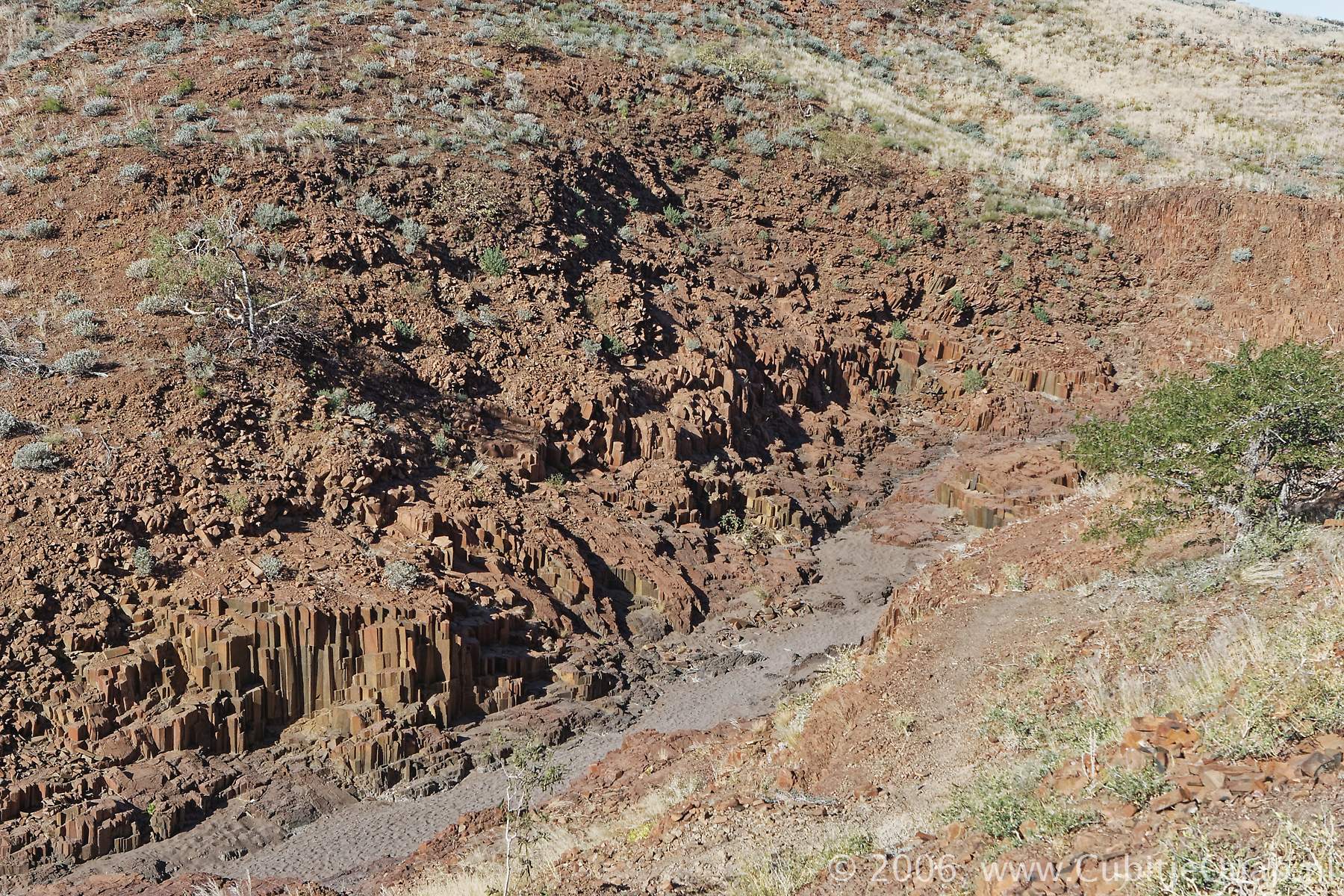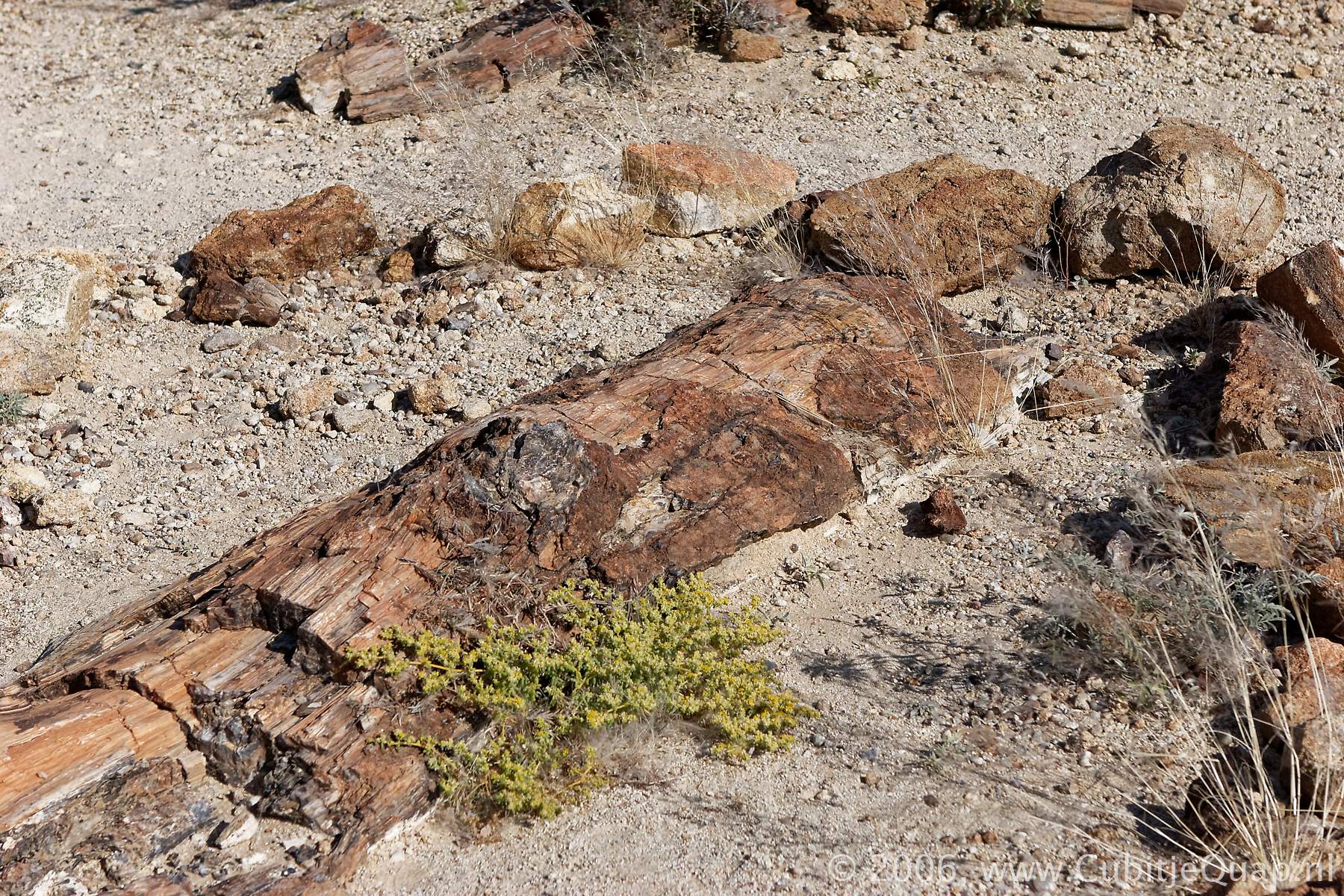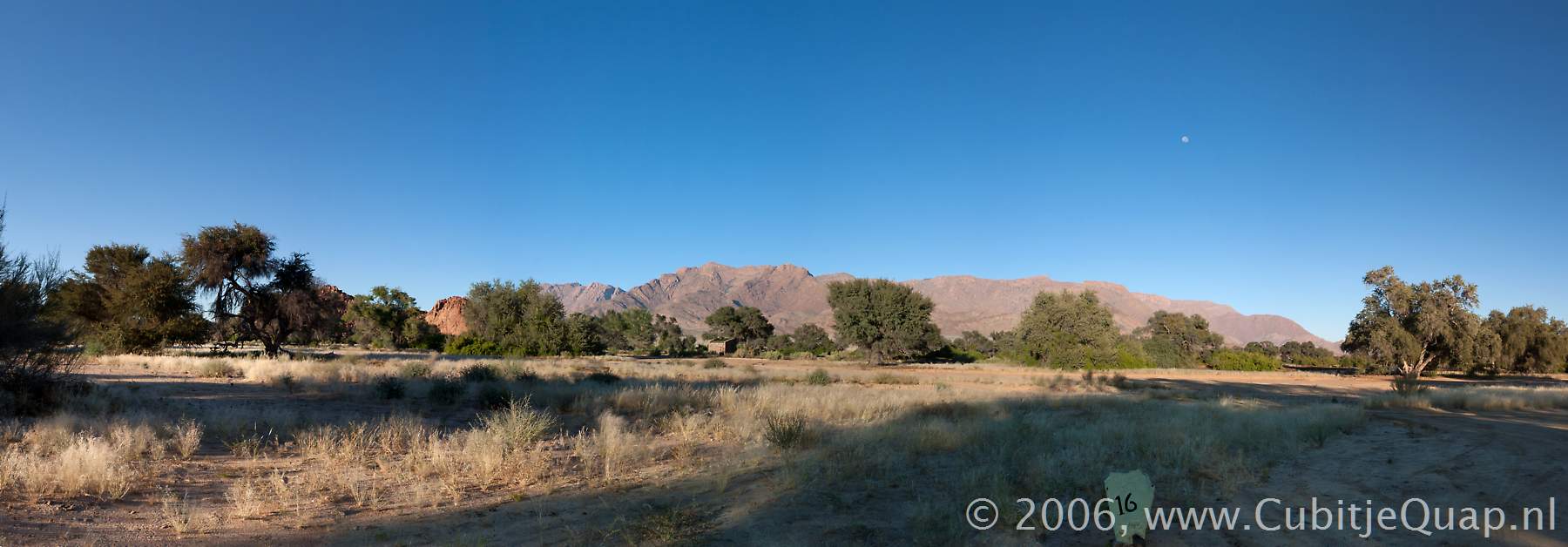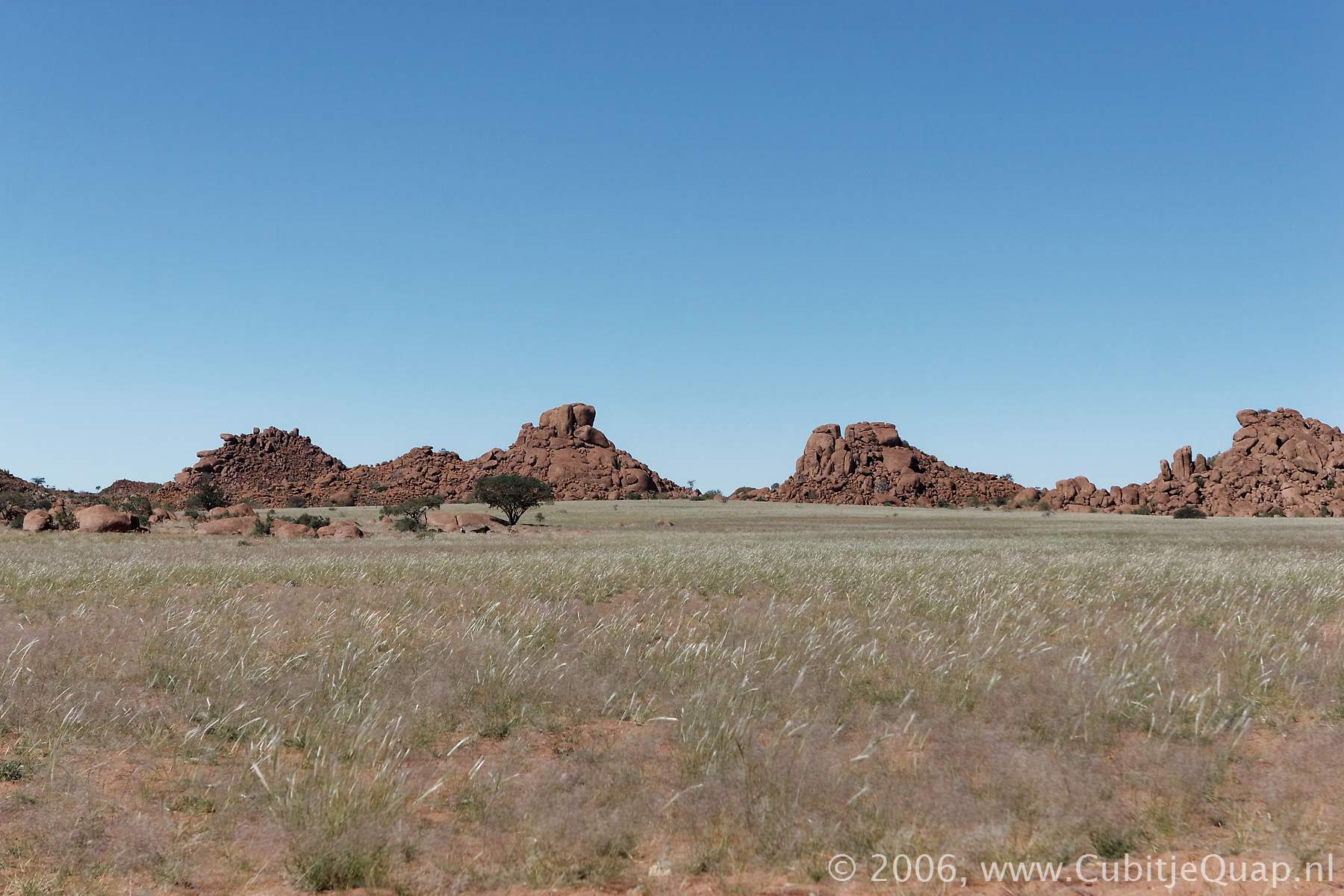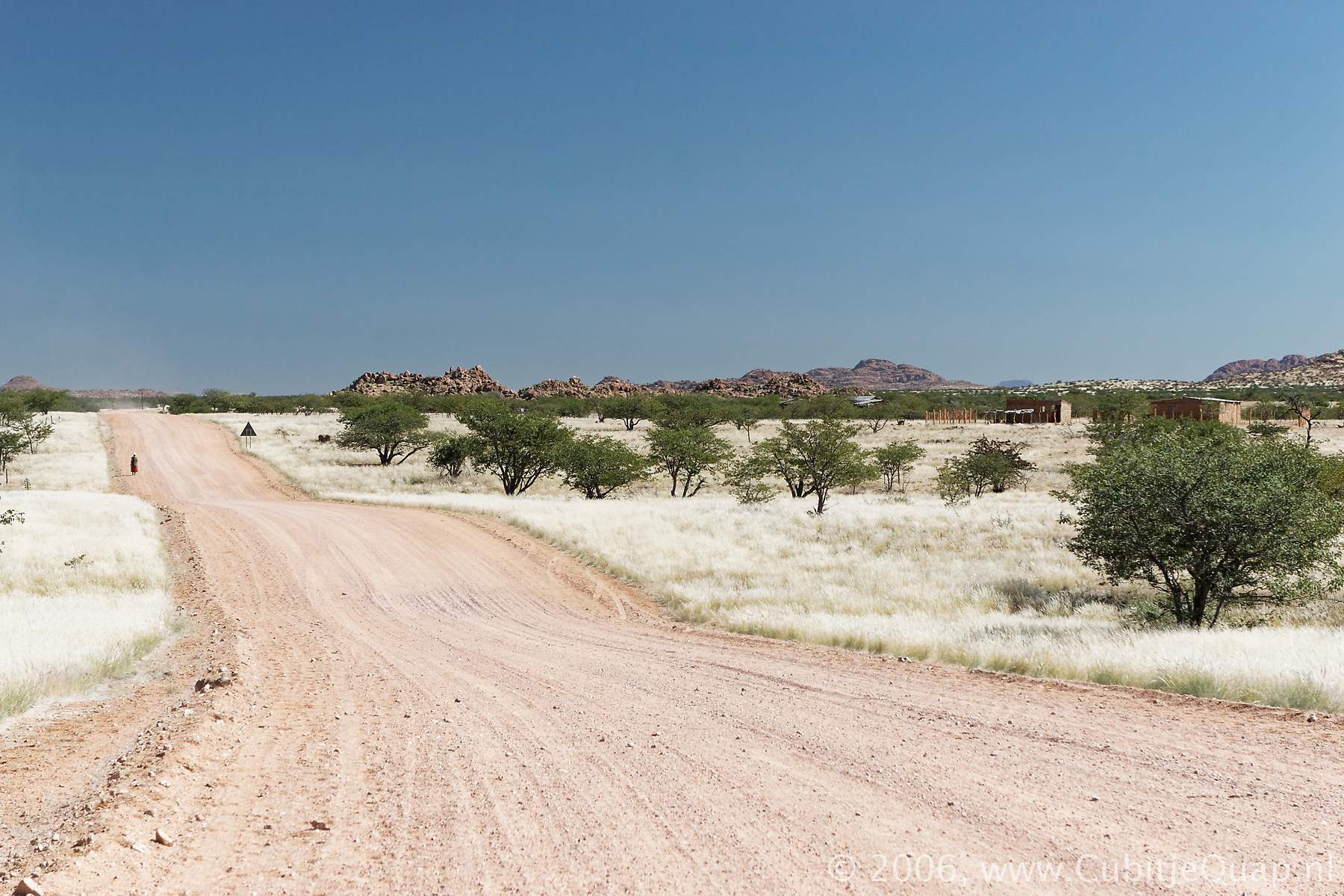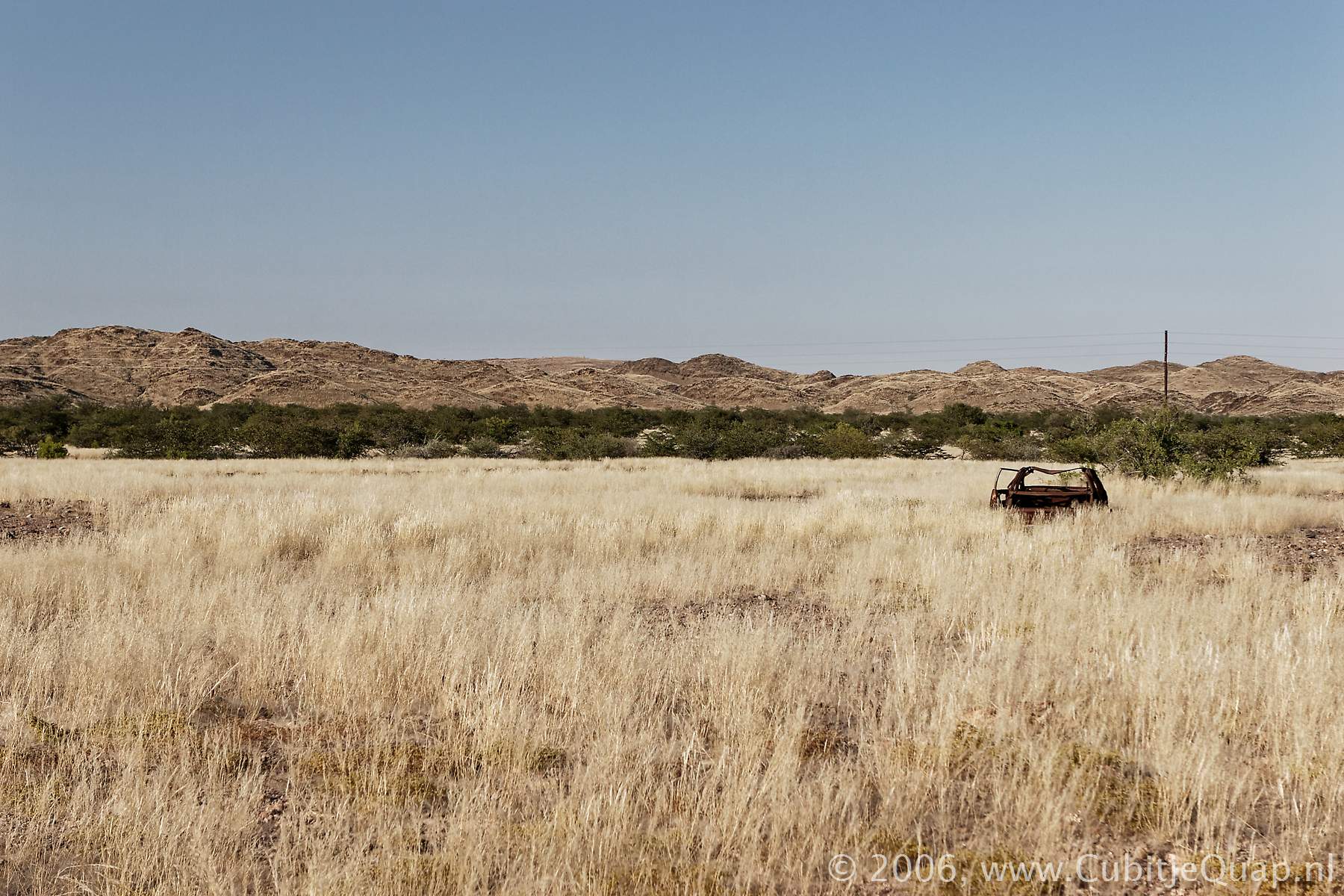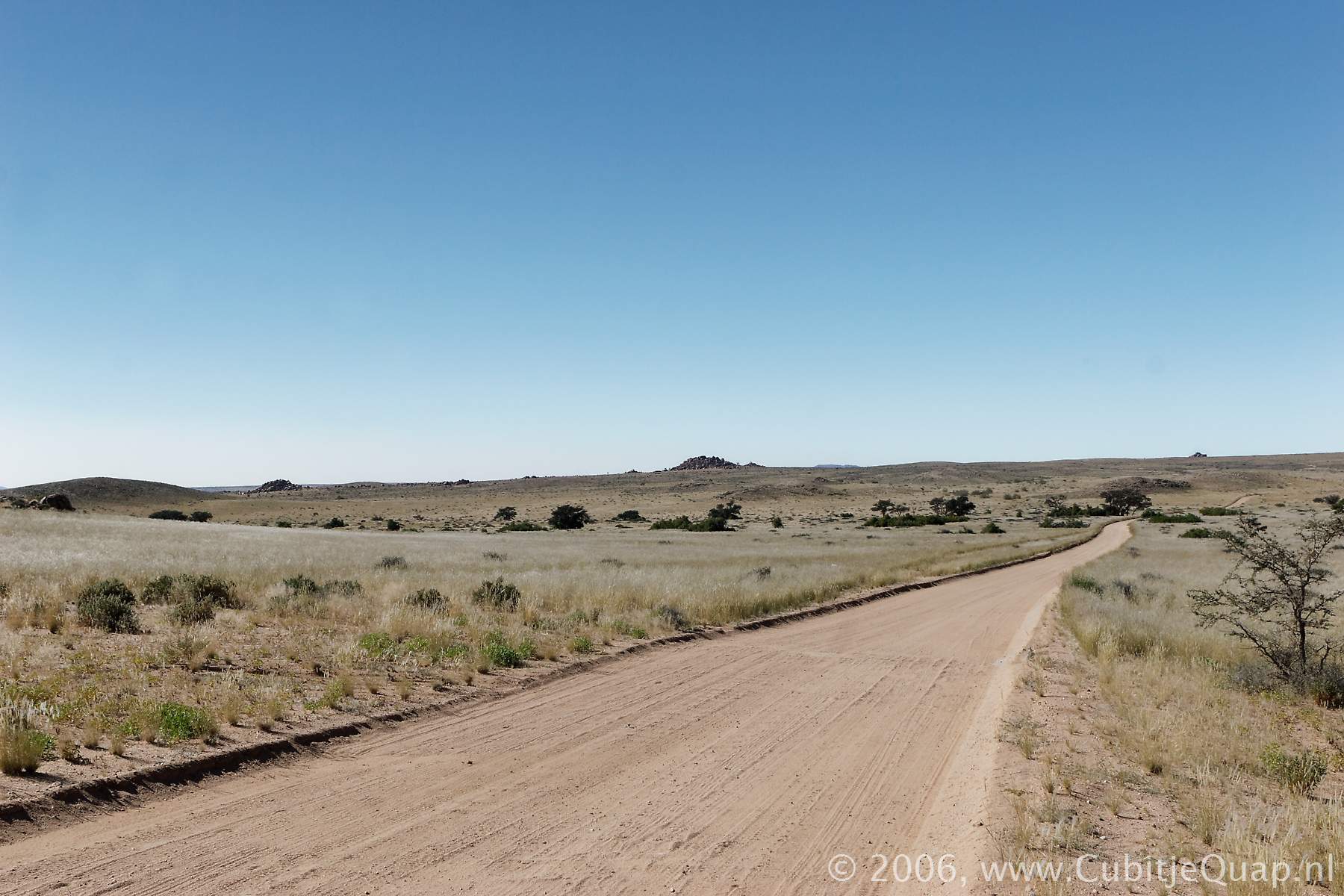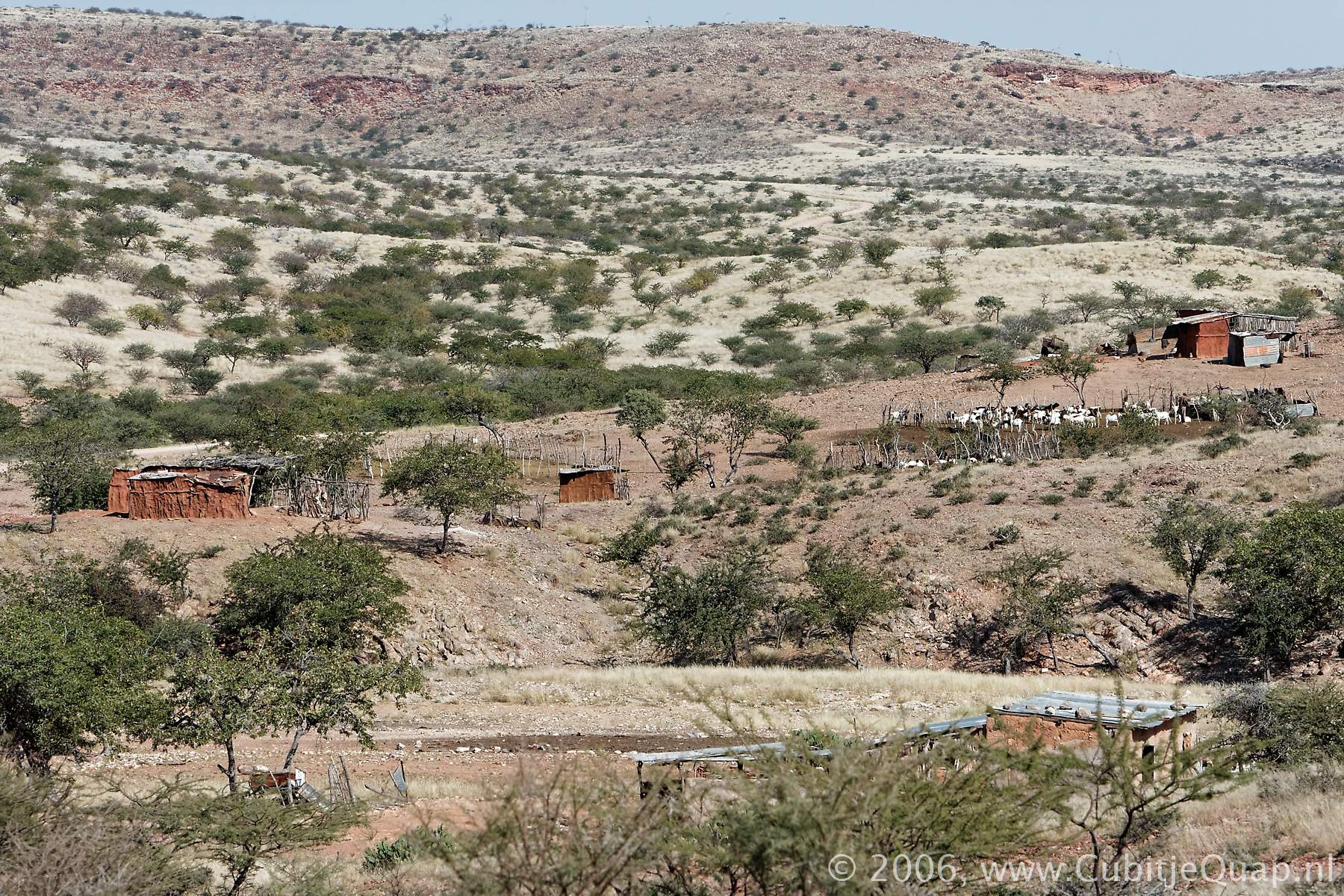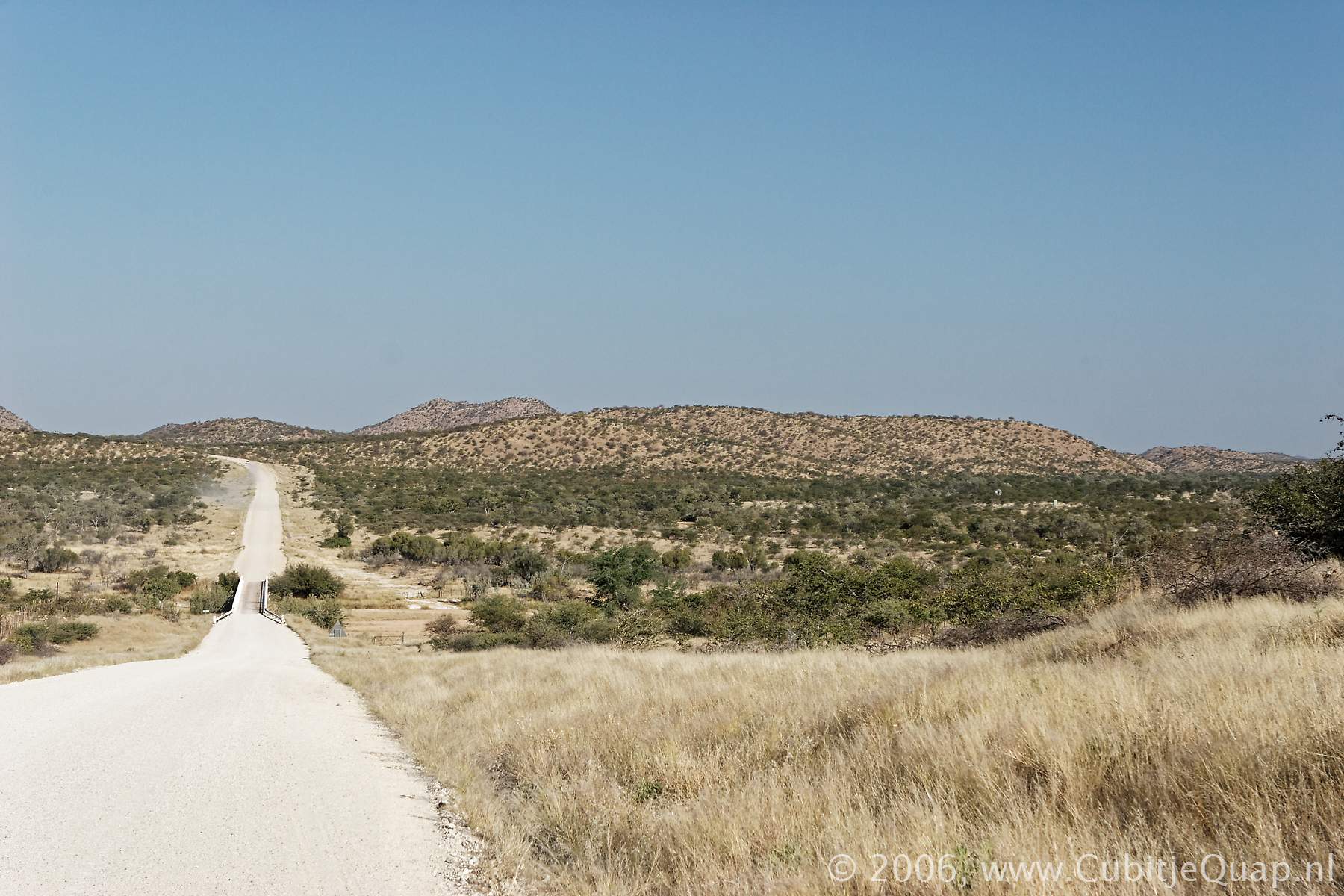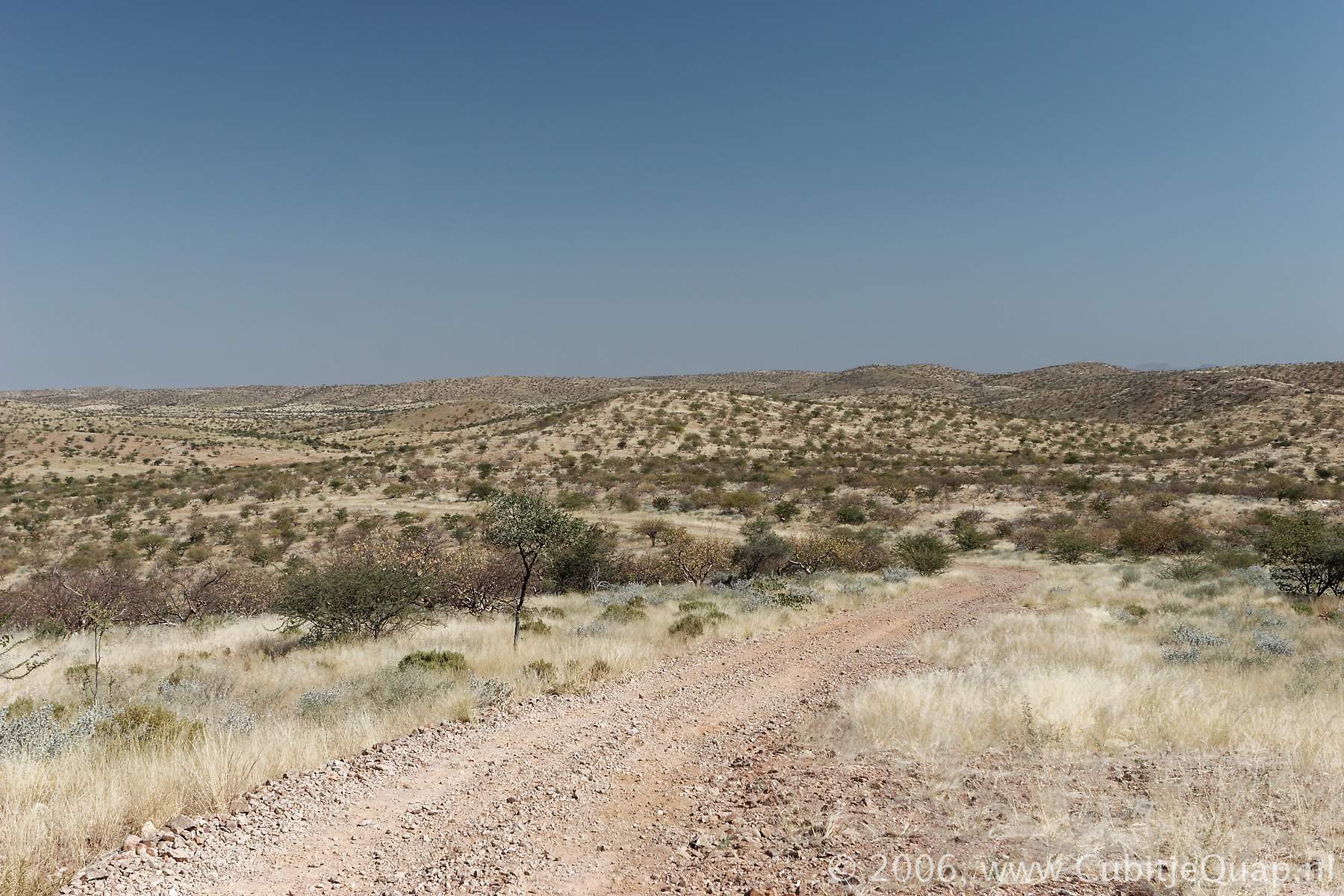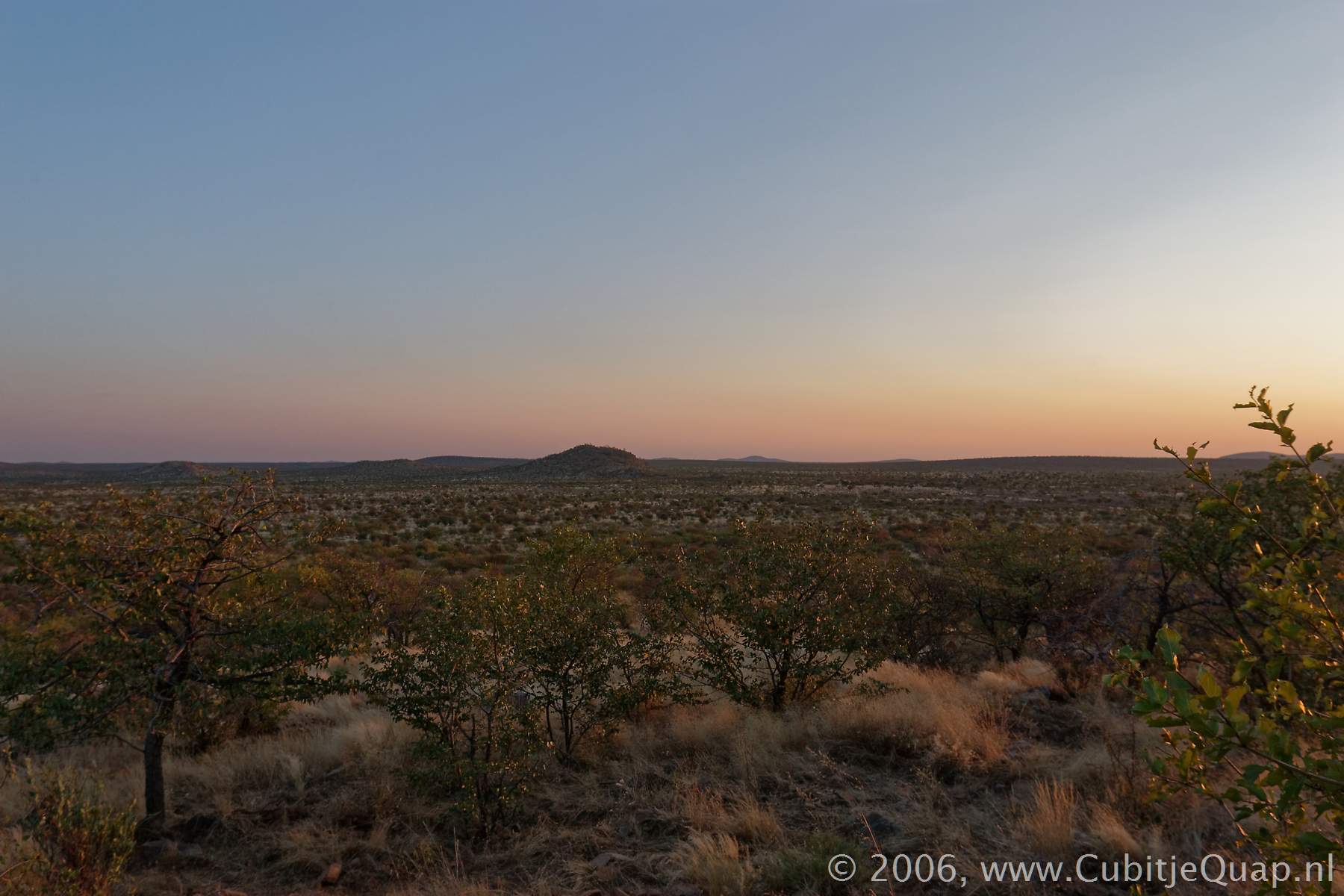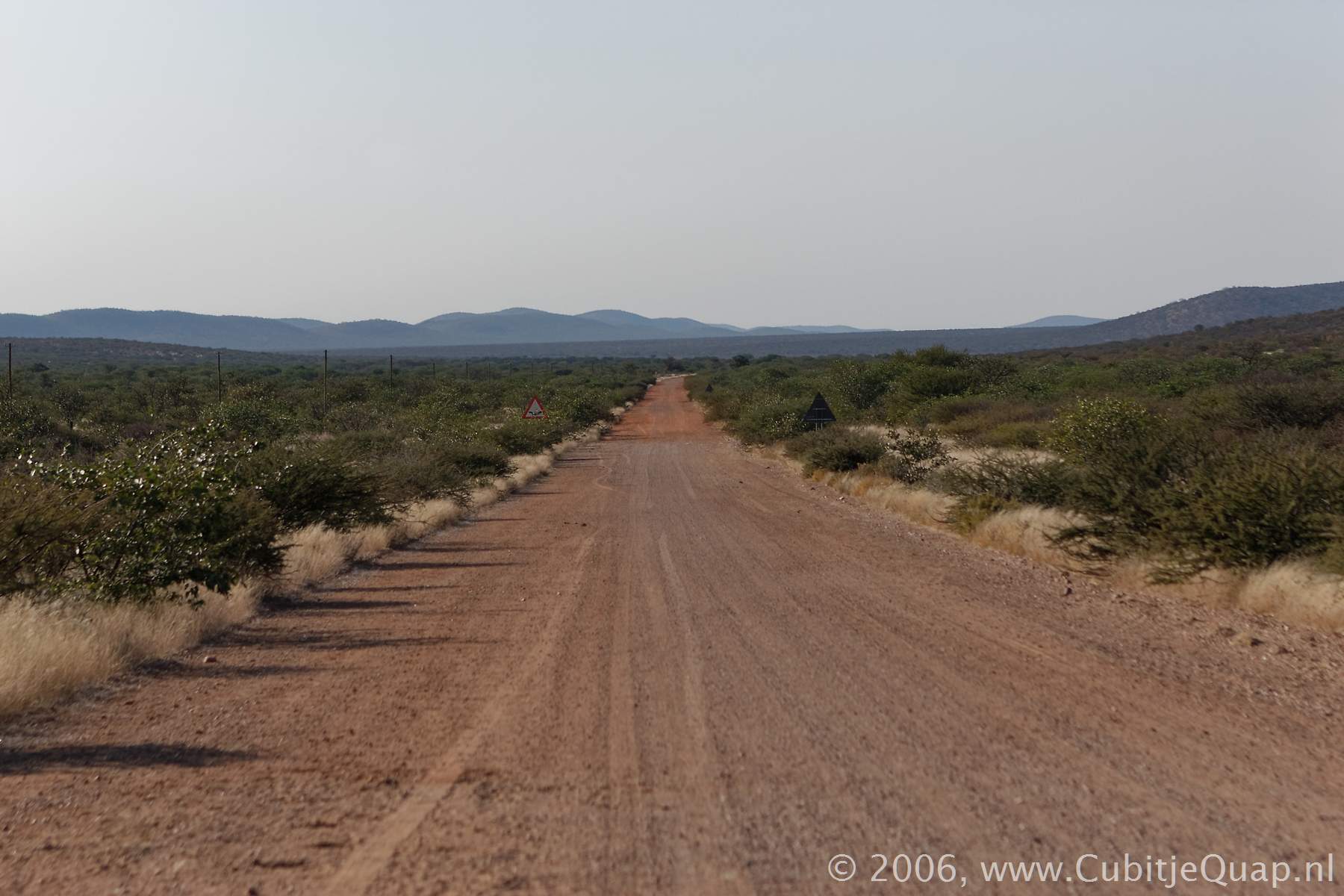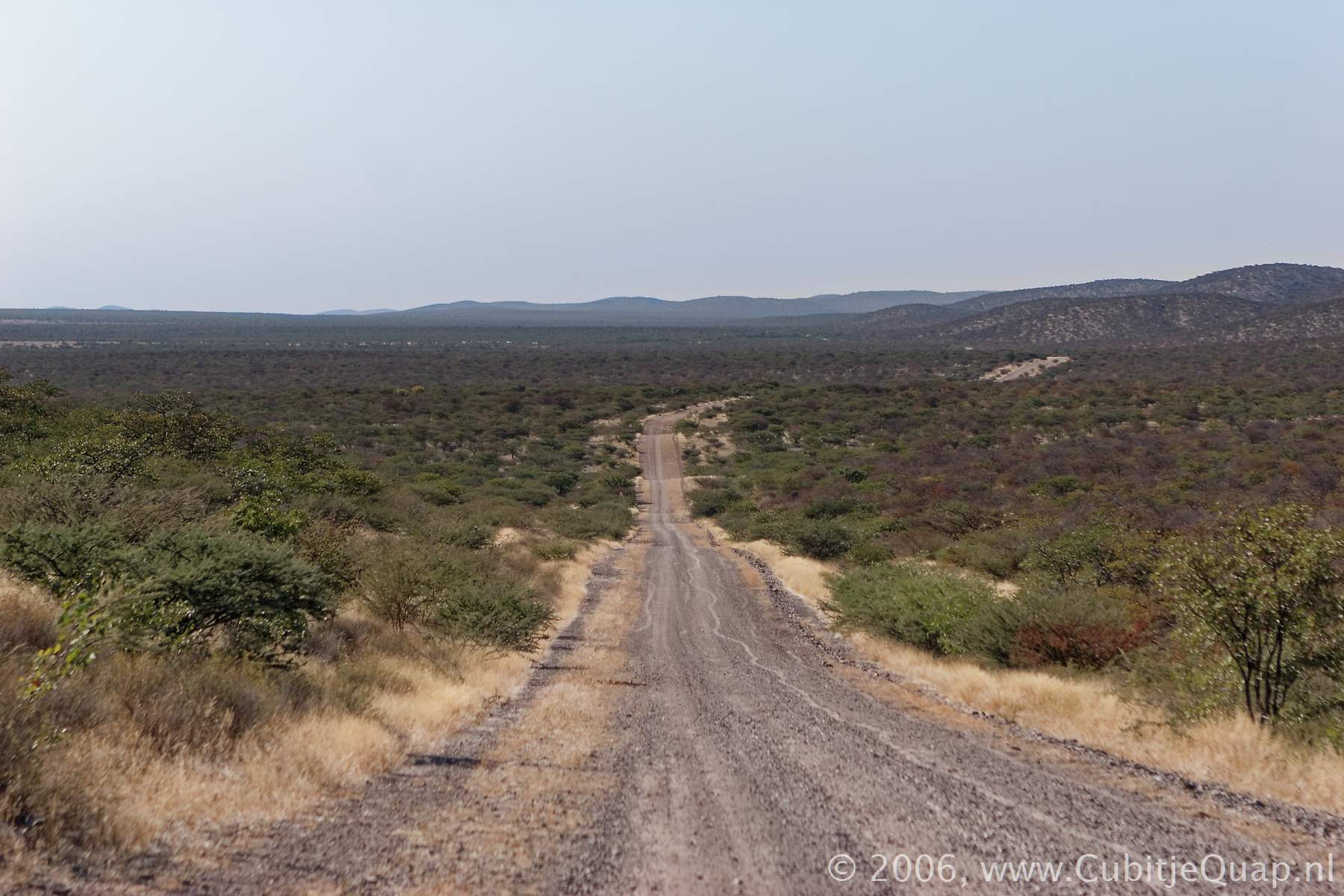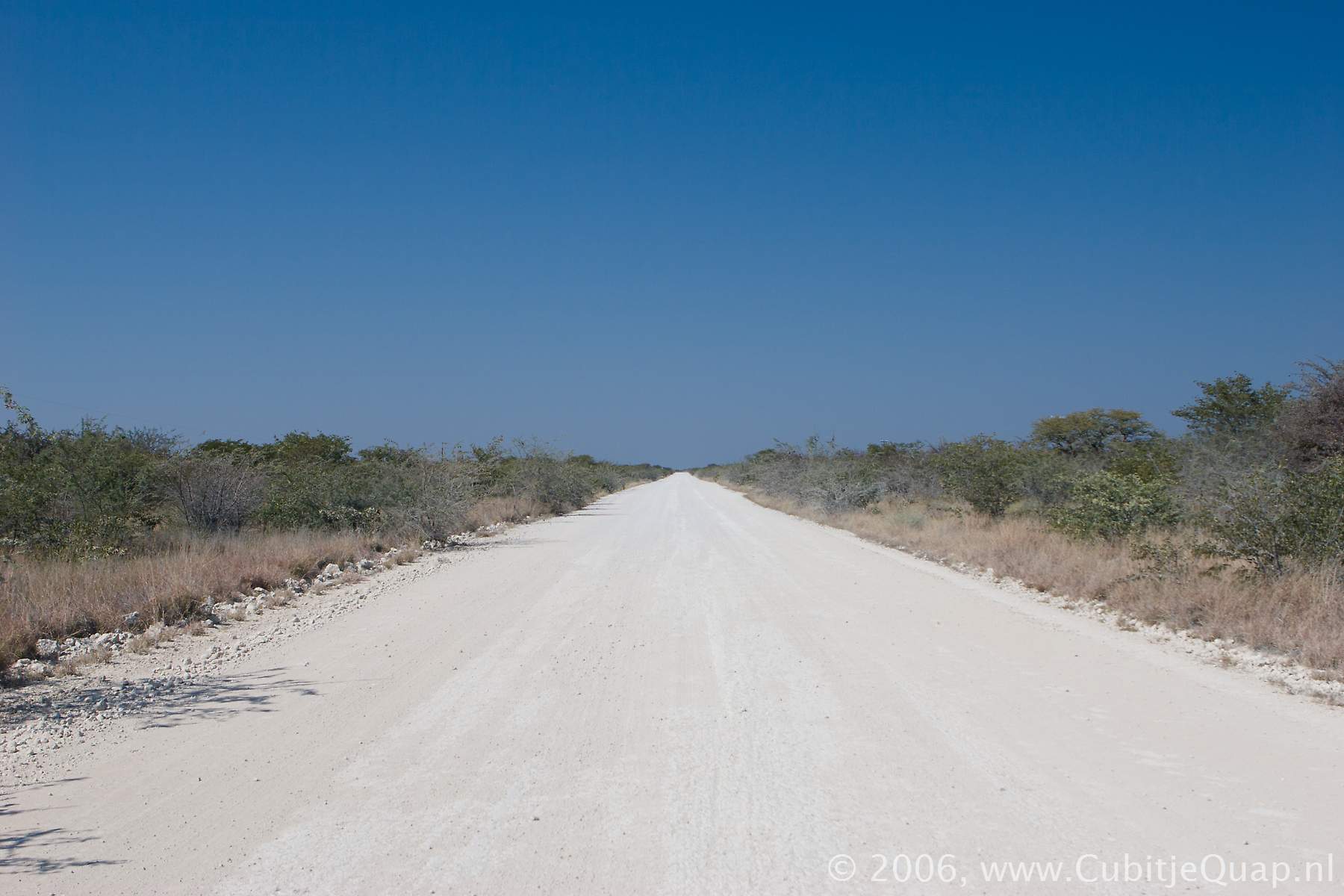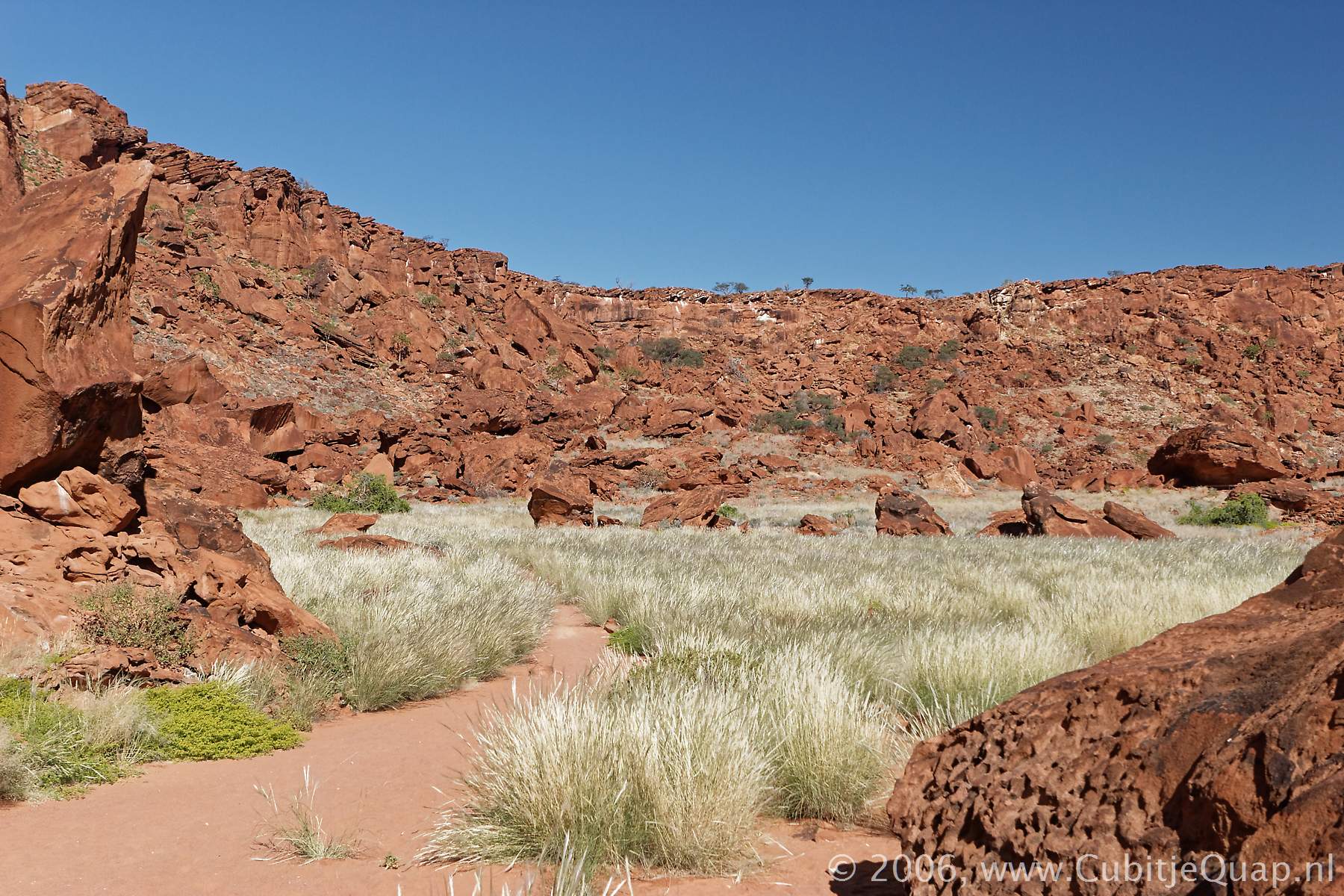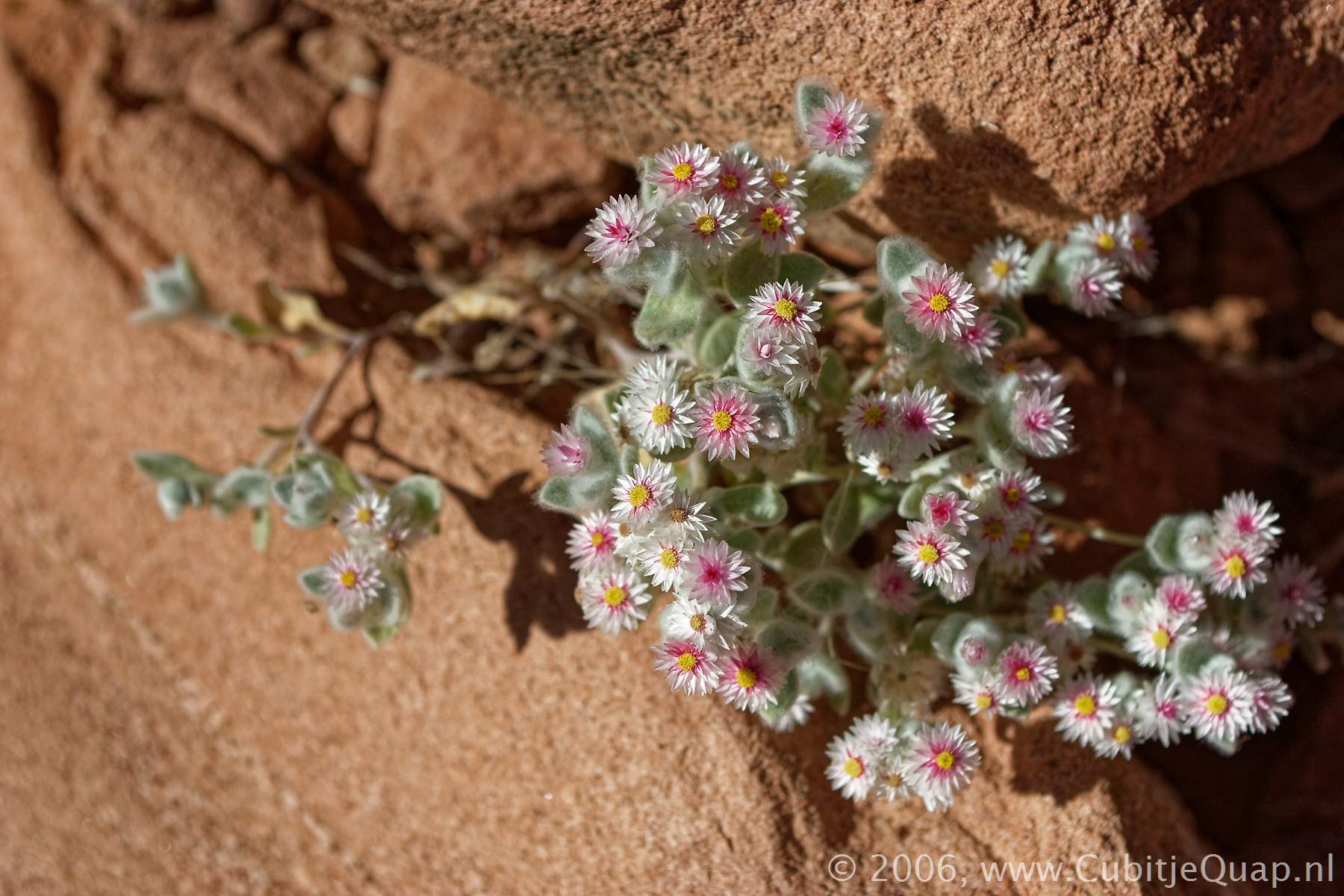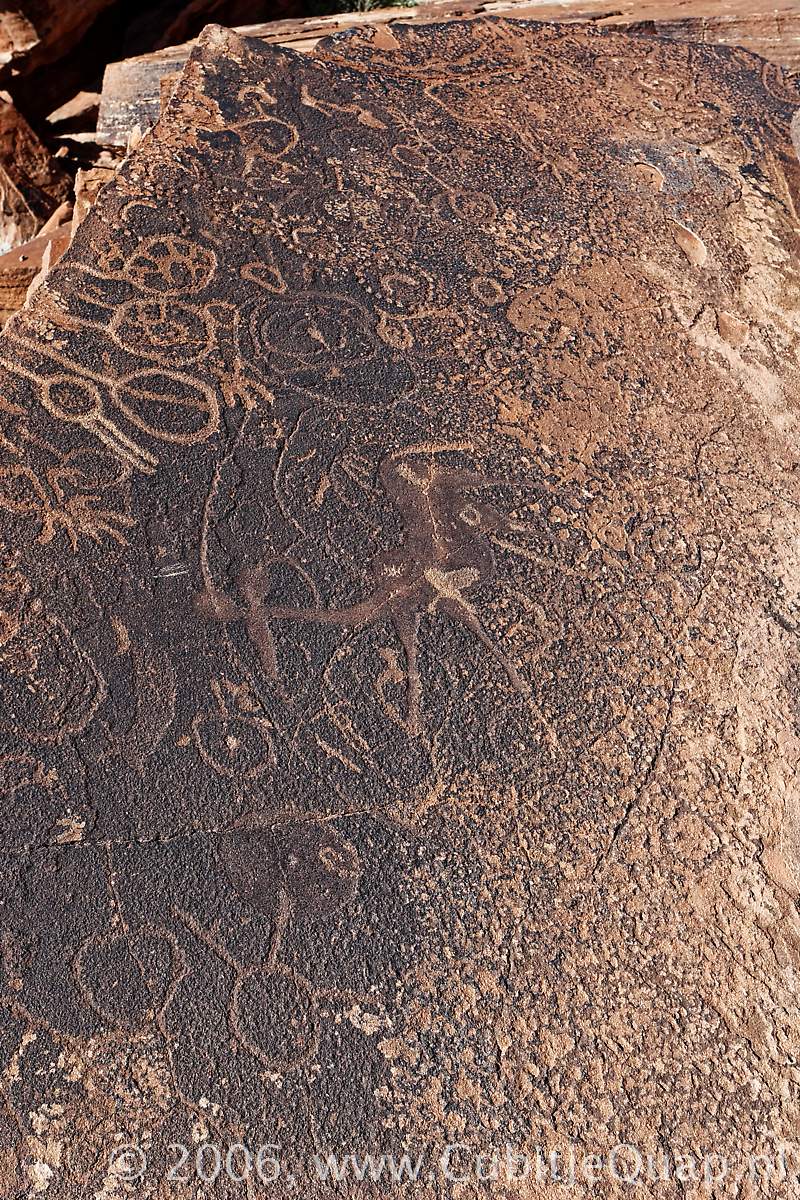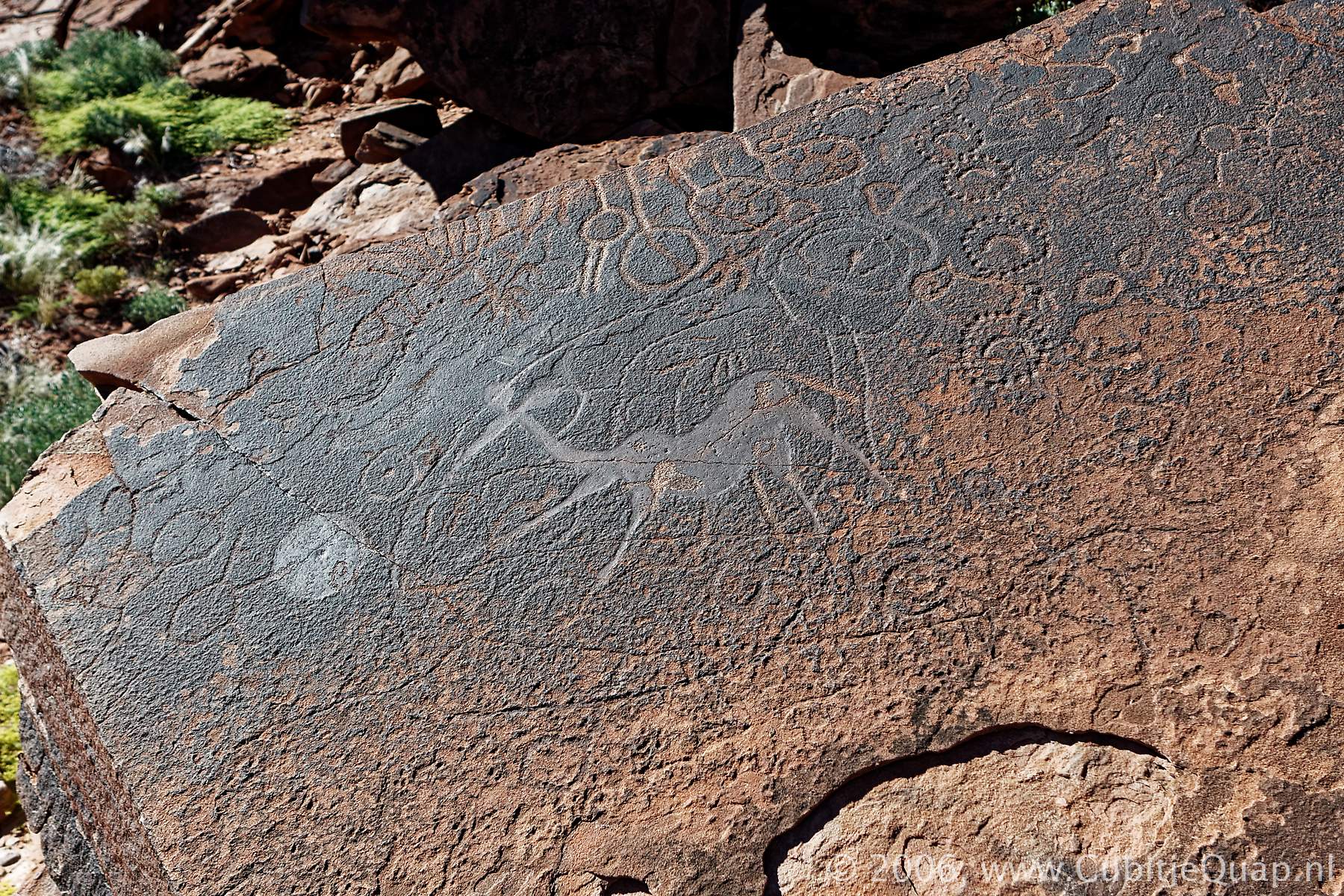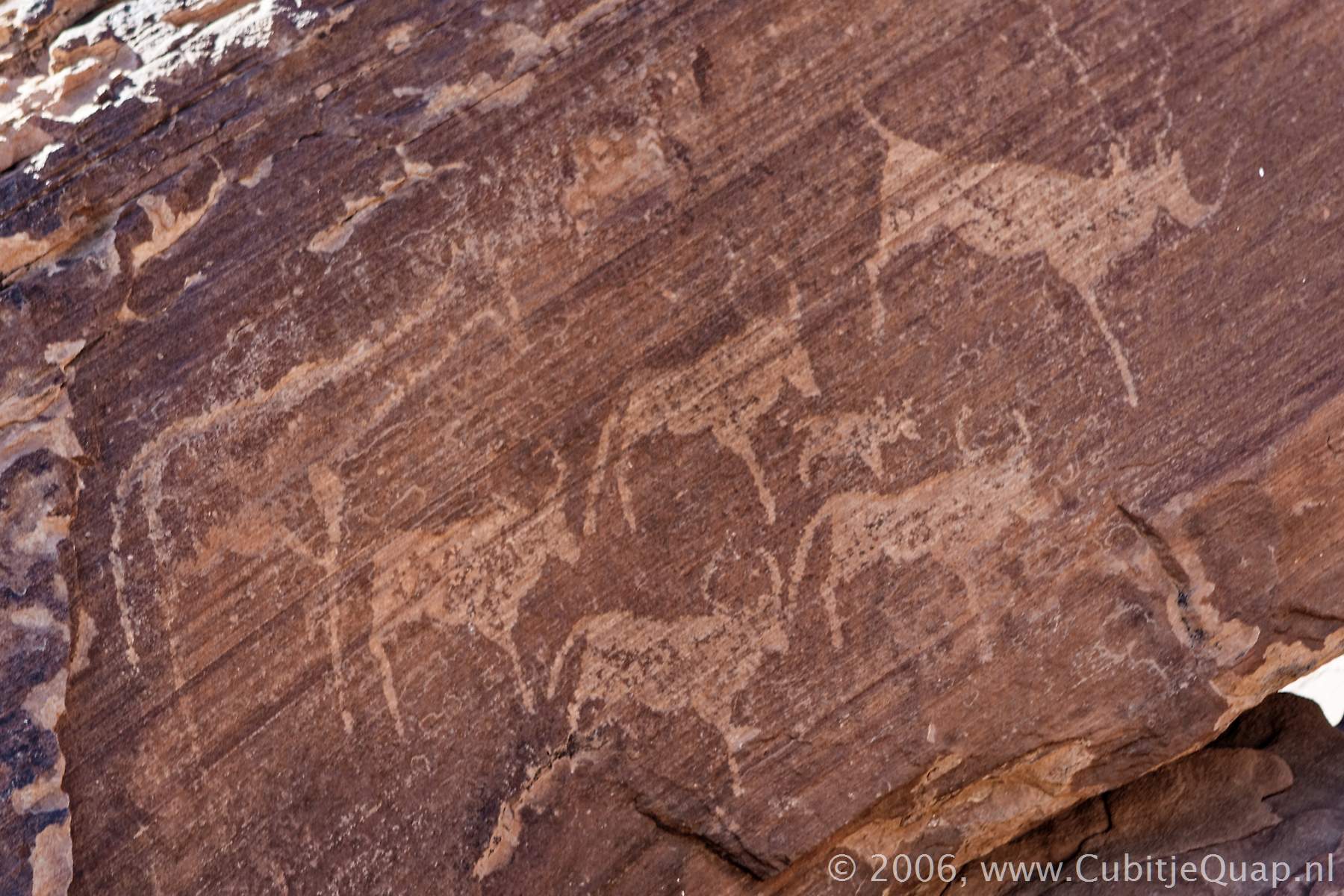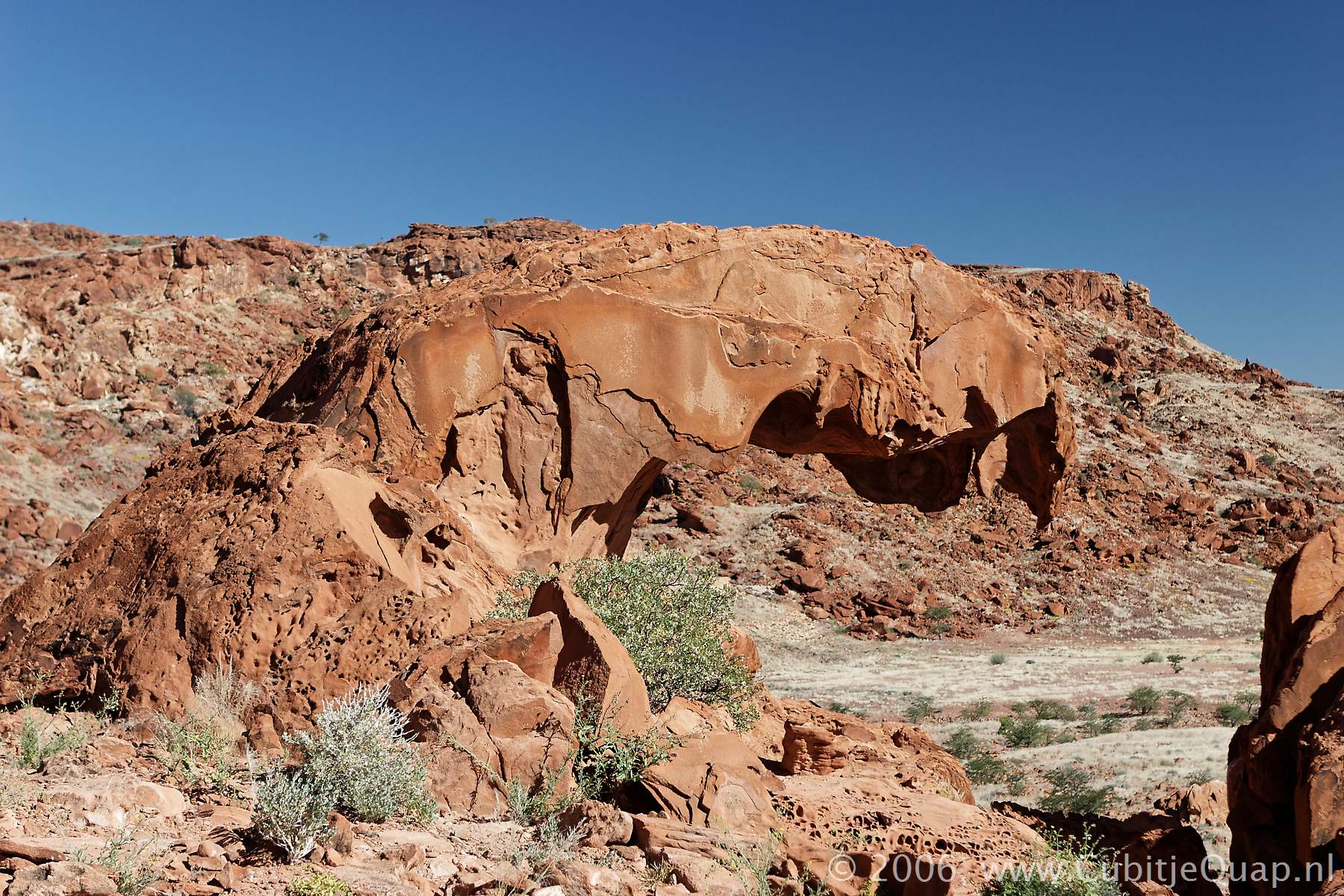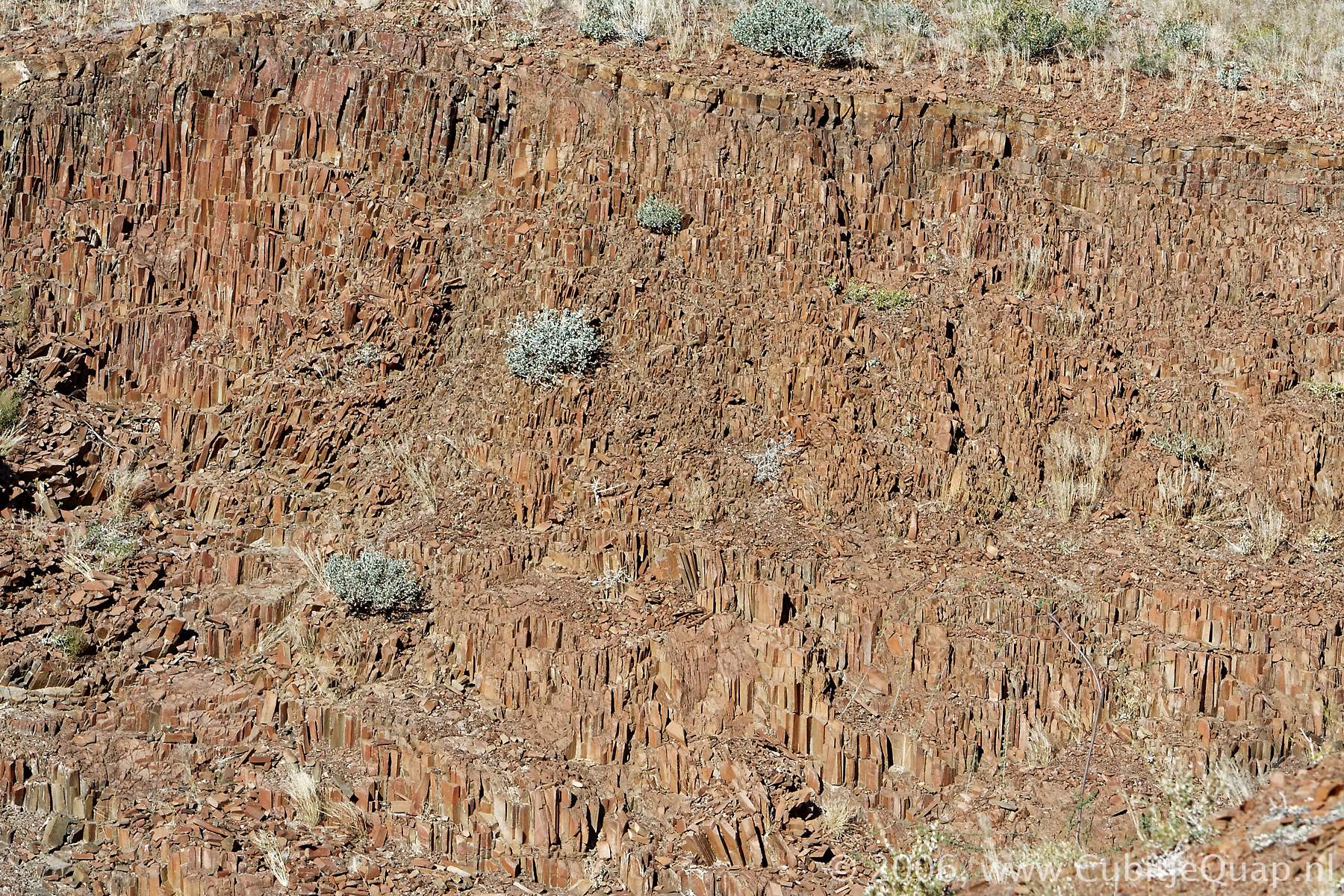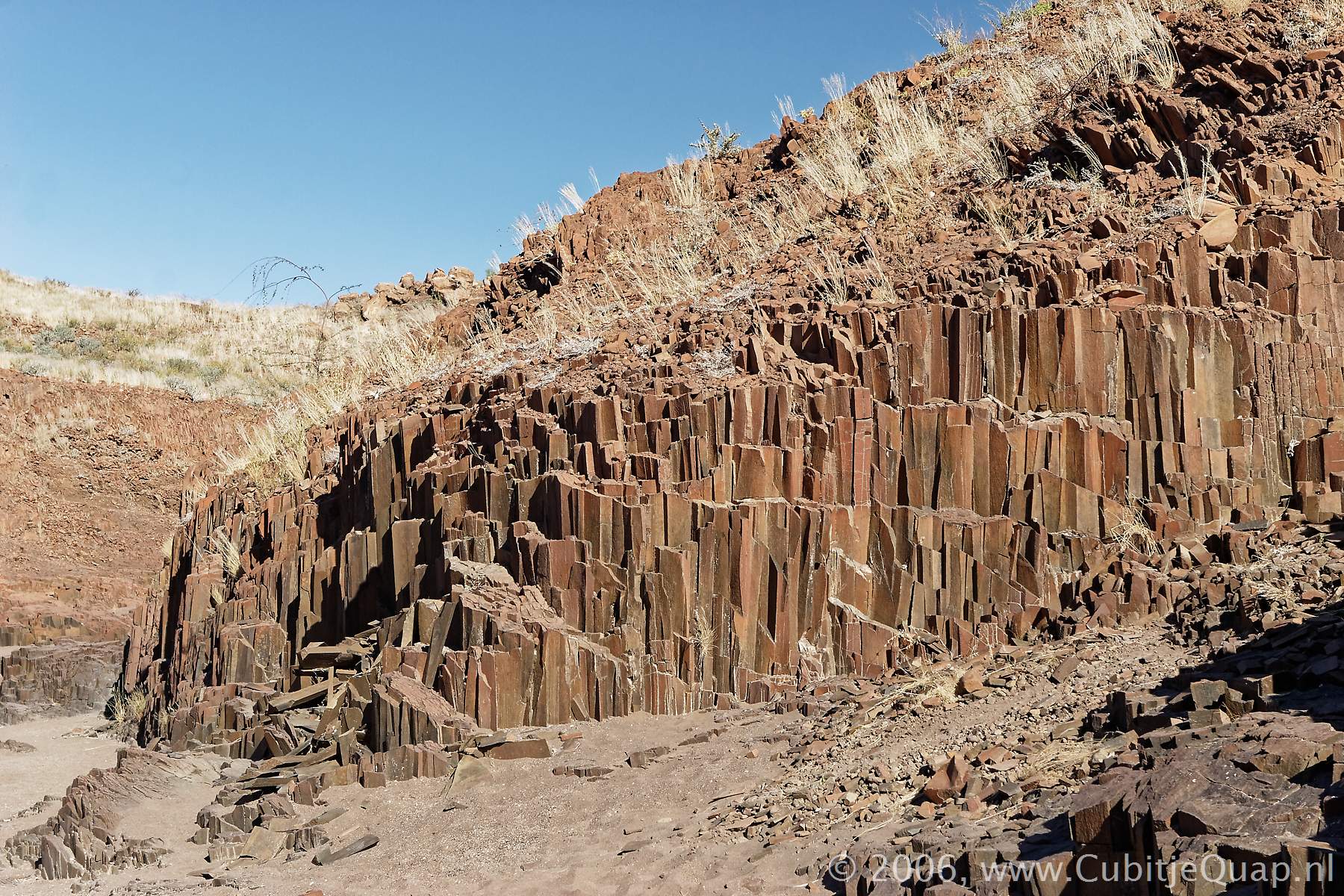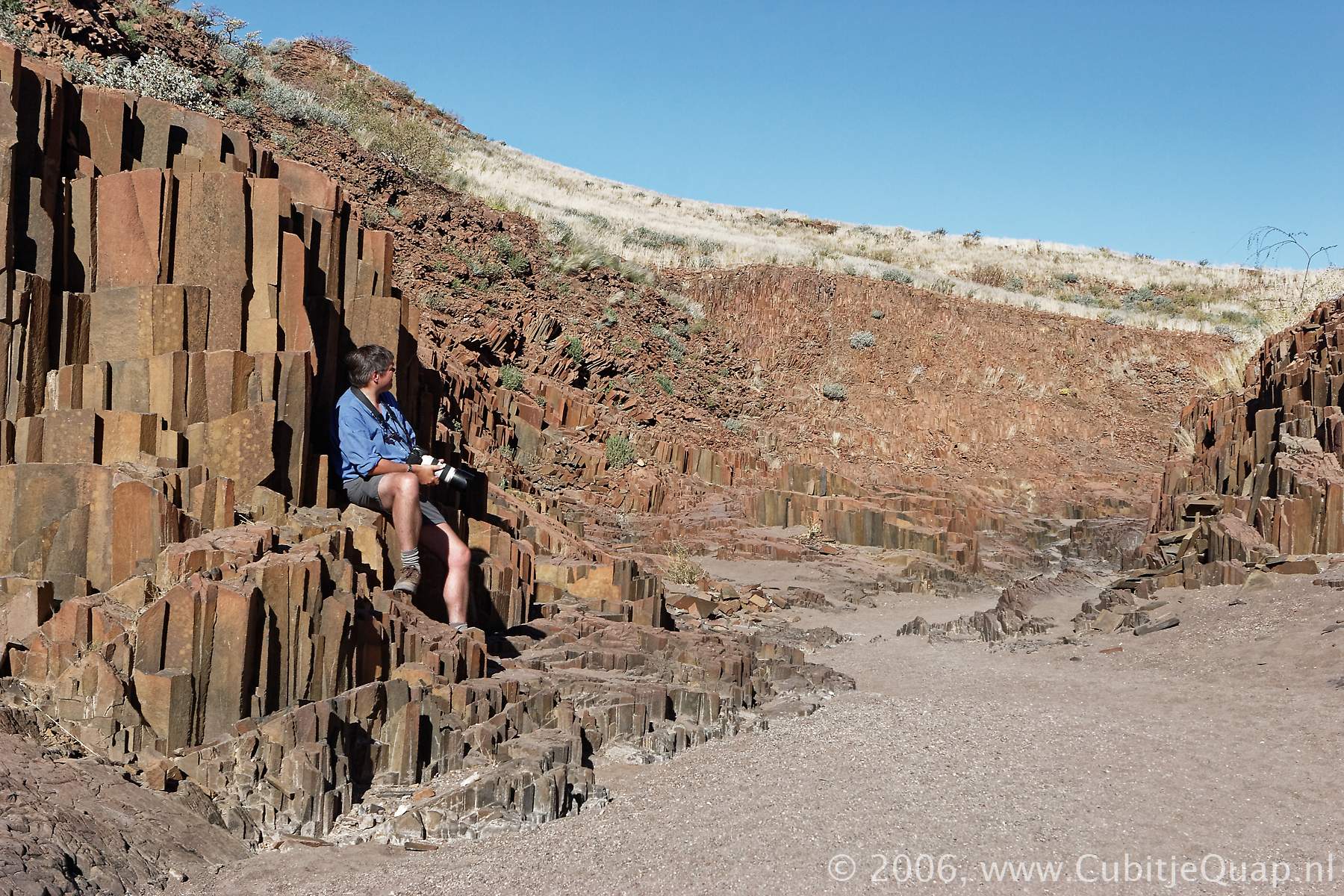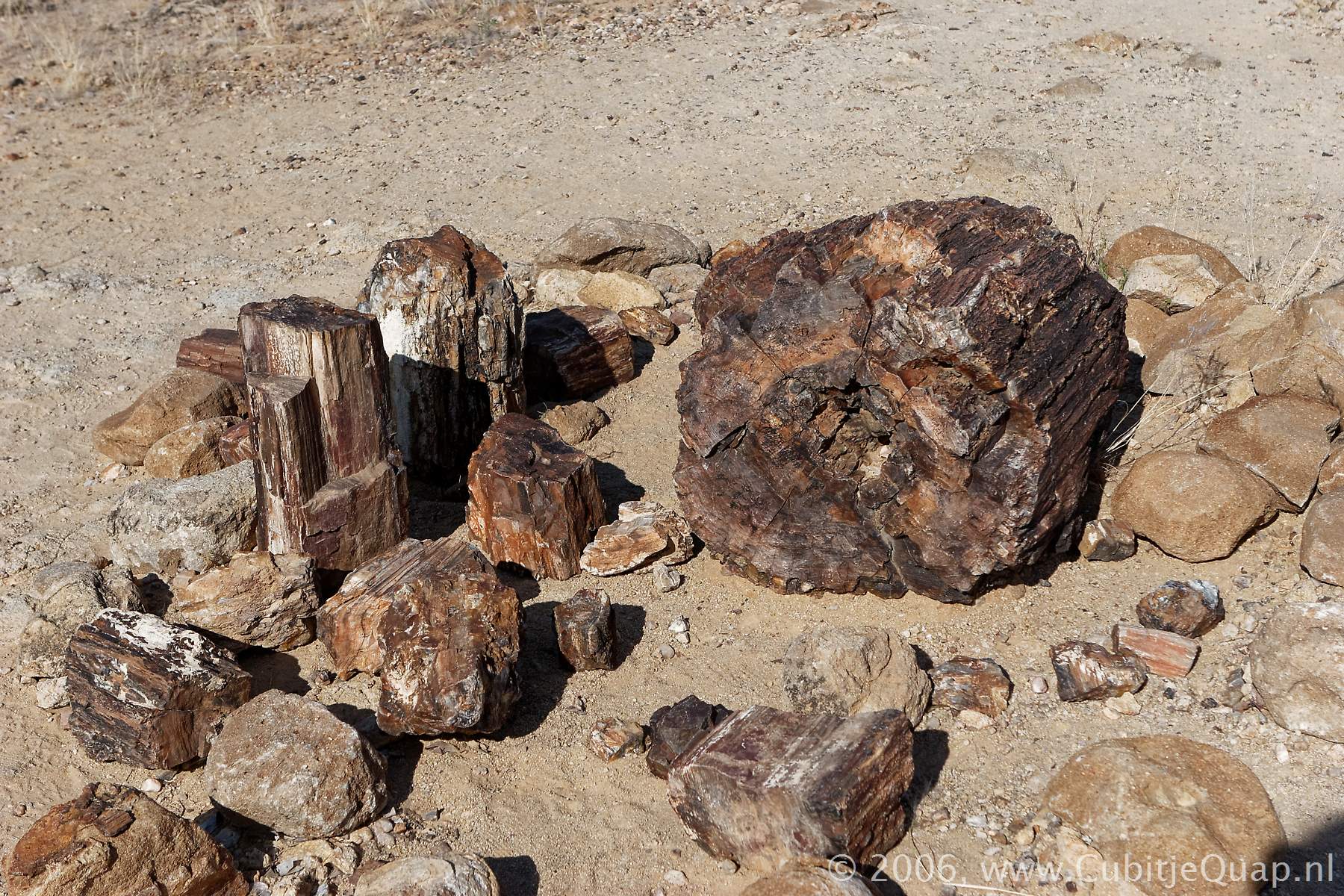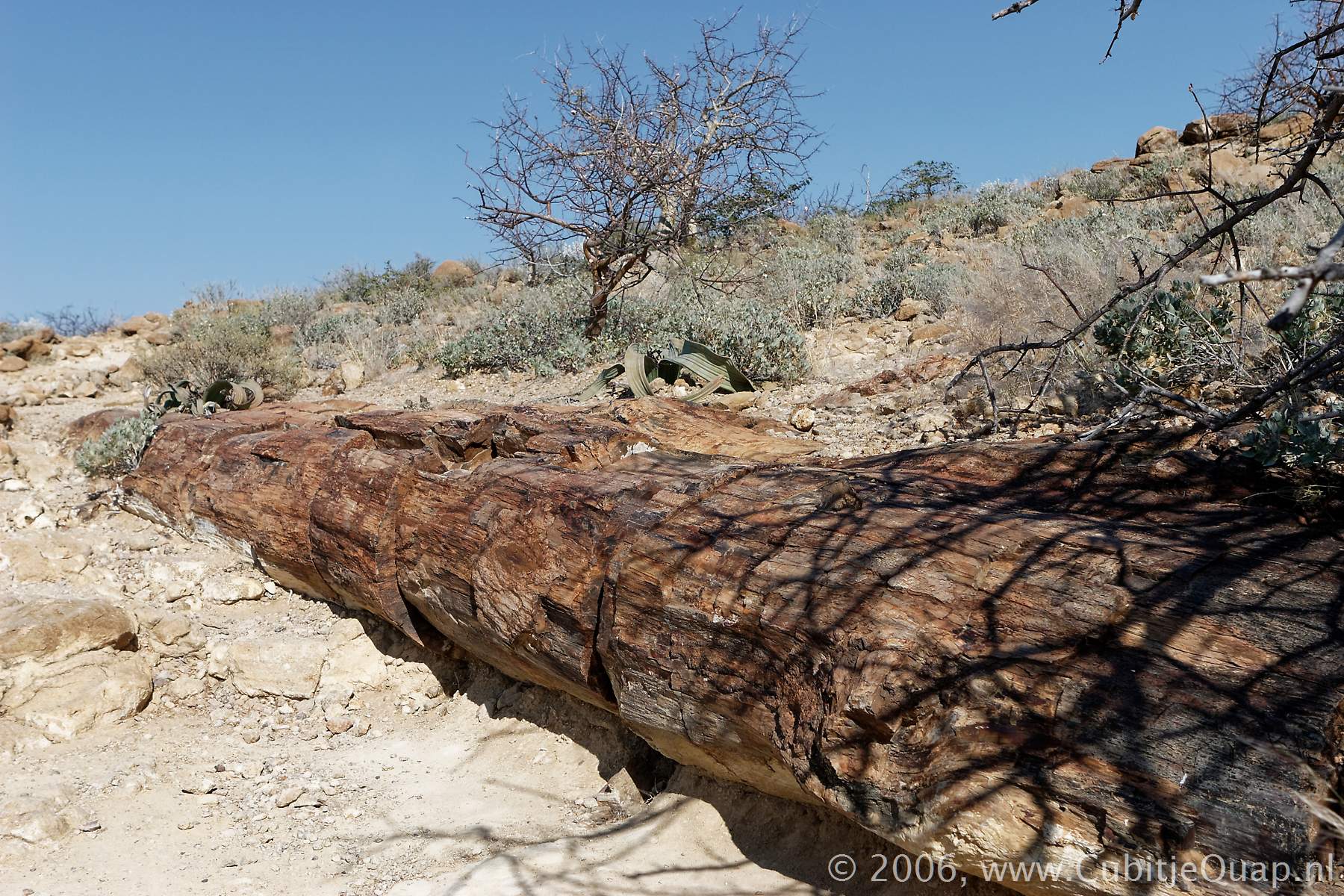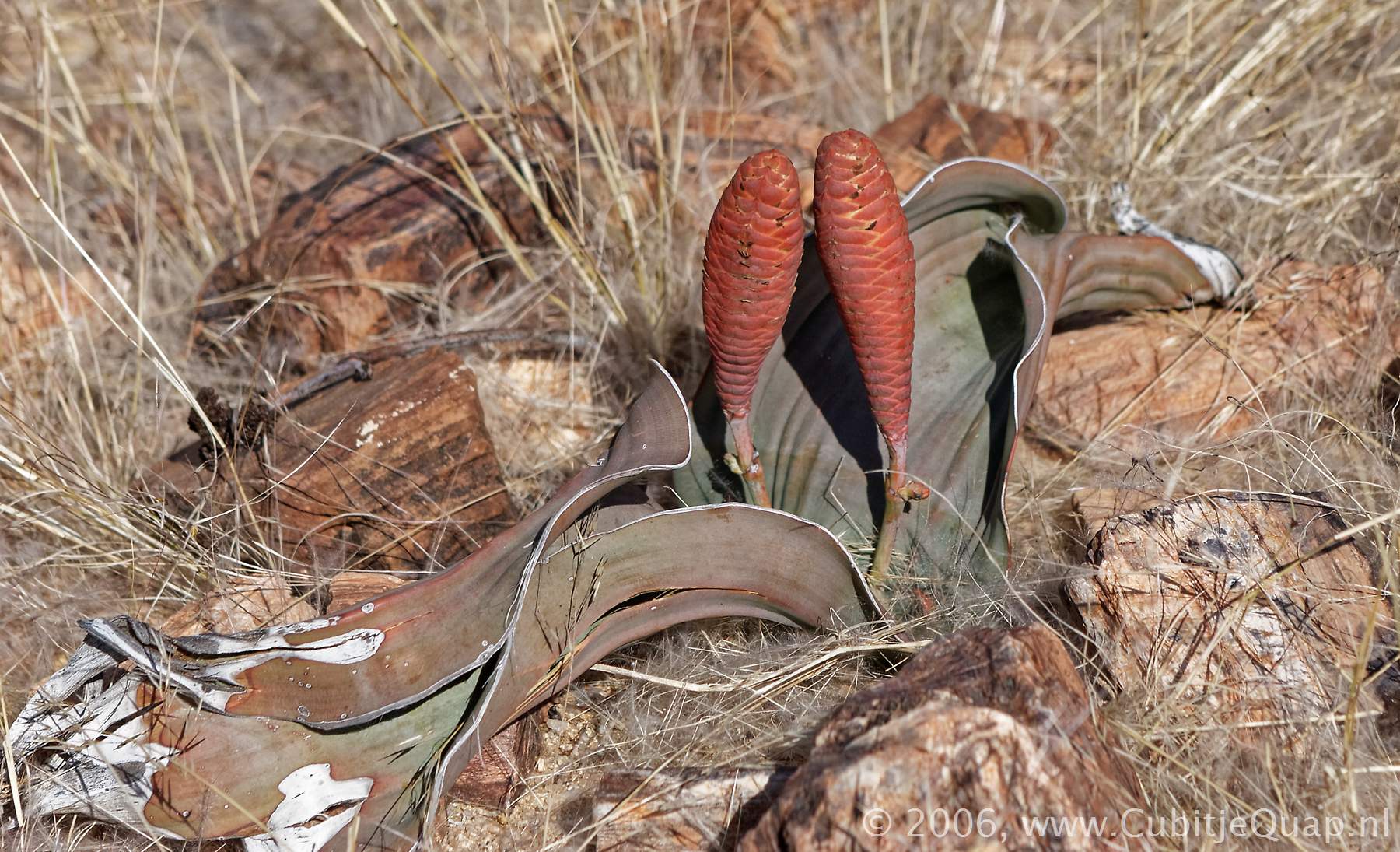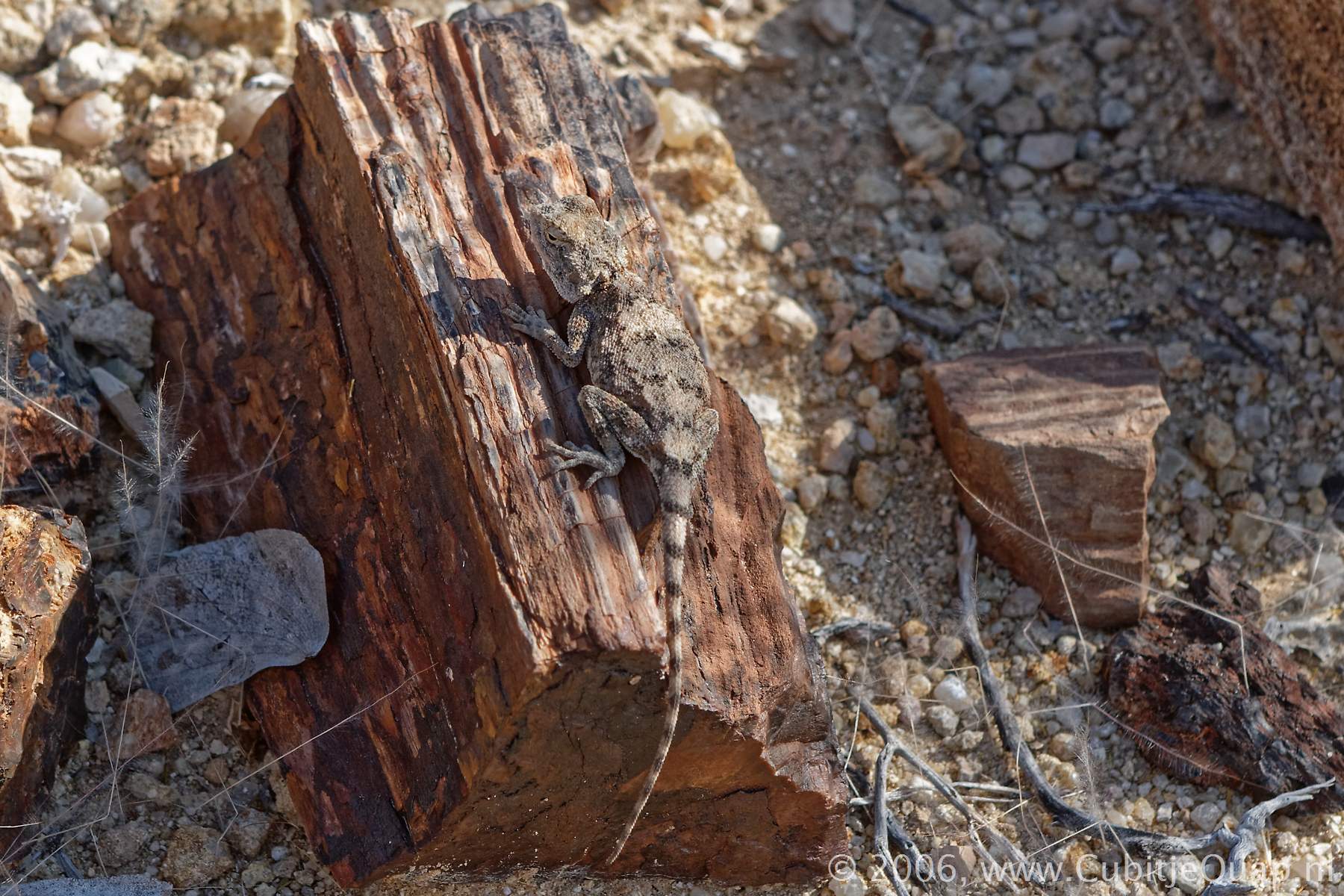Damaraland
Location
Damaraland is the old apartheid name given to the region south of Kaokoland and north of the main road to Swakopmund. It extends 200km inland from the desolate Skeleton Coast and 600km southwards from Kaokoland. The name Damaraland is derived from the fact that the Damara people live in this area (they were relocated here as a result of the Odendaal Plan in the 1960's). The name Damaraland is still commonly used in tourism circles, although the entire region has now been renamed; the southern section now lies in the Erongo region while the north forms part of the Kunene region.
Highlights of the area include: the Brandberg, Namibia's highest mountain and home to the famous 'White Lady' Bushman Painting, twyfelfontein and the nearby Organ pipes, Spitzkoppe, the Petrified Forest and the Vingerklip.
Twyfelfontein
Twyfelfontein (or Doubtful fountain in English) received its African name in 1947, when the first white farmer acquired the land: he considered the tiny fountain too weak to support his needs. Of course, the fountain was known for a long time before by the local Damara. They named the valley Uri-Ais, or Jumping Fountain. The valley has evidence of habitation of over 5000 years.
The Twyfelfontein site was declared a national monument in 1952, although even since then many of the rock engravings have been stolen. Until now, about 2,500 rock engravings have been identified, varying in age from 300 BC to the 19th century. The majority of the engravings depict game, including elephant, rhino, lion, kudu and giraffe. Not many human pictures have been found. The most amazing engraving is of a seal, despite the fact the site is more than 100km from the coast line.
Organ Pipes
Only a few kilometers from Twyfelfontein, the dolorite columns of Organ Pipes can be found. When getting there, your first view will be from a small parking lot above a dry river bed. You will literally see the up to 5 meters high perpendicular pipes from above. A short walk via the river bed will bring you very close to these elegant rocks, formed some 120 million years ago.
Petrified forest
Petrified Forest was declared a national monument in 1950 and can be found in the Abu Huab Valley. The area is about 800 by 300 meters and contains about 50 fossilized trees. The petrified trees do not originate from the Aba-Huab Valley, but were transported there by floodwaters from retreating glaciers. The largest tree measures more than 30 meters.
Between the petrified trees, the beautiful and unique Welwitschia mirabilis, an ancient-looking plant can be seen. The Welwitschia is endemic to the region, endangered in Namibia and a little bit easier to find in south Angola, because of the thousands of land mines in that country. Welwitschias are dioecious; separate male and female plants exist. The Welwitschia has only two leaves, that continue to grow about 10cm a year. The tips of the leaves split and wilt, giving the illusion of many fronds.

